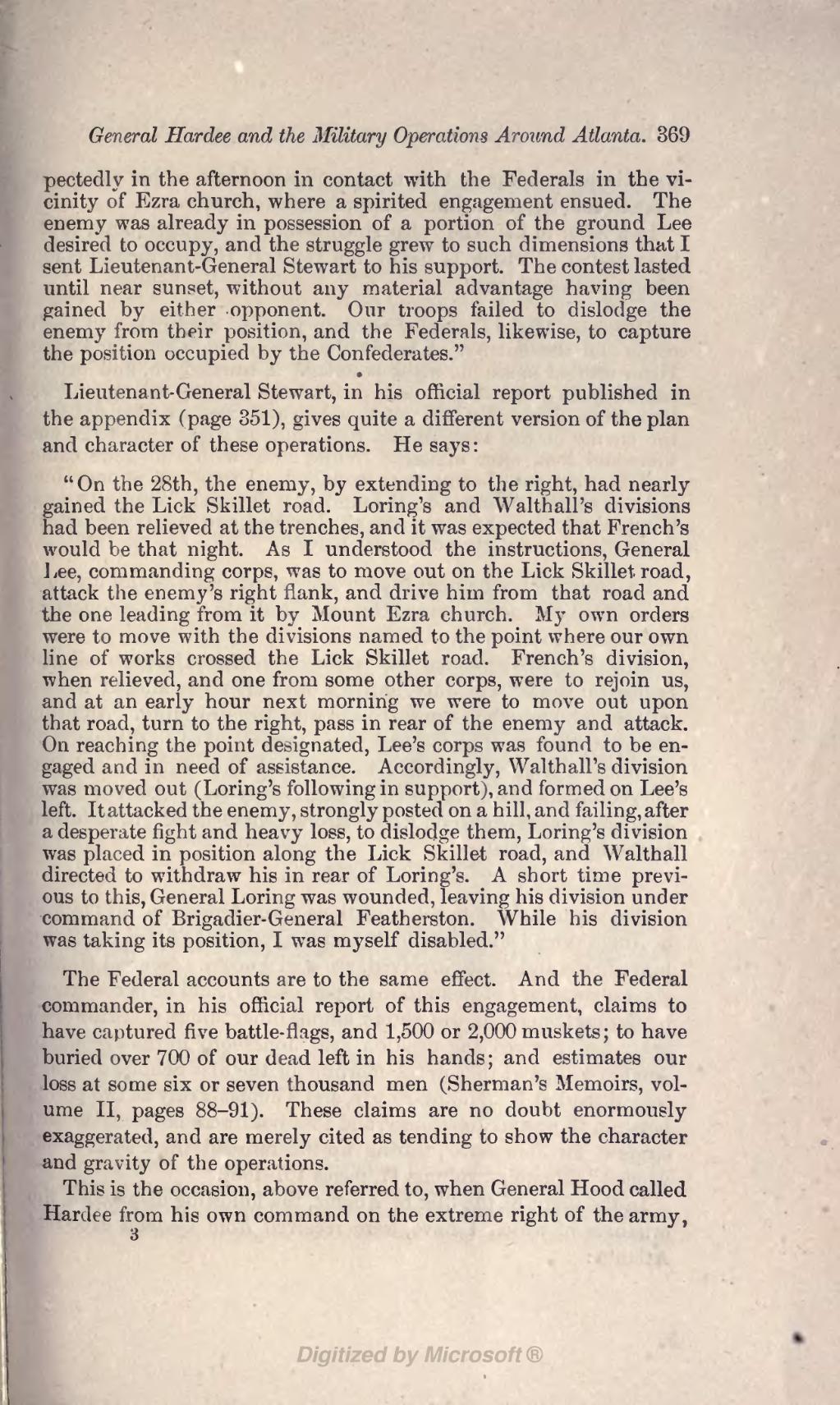pectedly in the afternoon in contact with the Federals in the vicinity of Ezra church, where a spirited engagement ensued. The enemy was already in possession of a portion of the ground Lee desired to occupy, and the struggle grew to such dimensions that I sent Lieutenant-General Stewart to his support. The contest lasted until near sunset, without any material advantage having been gained by either opponent. Our troops failed to dislodge the enemy from their position, and the Federals, likewise, to capture the position occupied by the Confederates."
Lieutenant-General Stewart, in his official report published in the appendix (page 351). gives quite a different version of the plan and character of these operations. He says:
"On the 28th, the enemy, by extending to the right, had nearly gained the Lick Skillet road. Loring's and Walthall's divisions had been relieved at the trenches, and it was expected that French's would be that night. As I understood the instructions, General Lee, commanding corps, was to move out on the Lick Skillet road, attack the enemy's right flank, and drive him from that road and one leading from it by Mount Ezra church. My own orders were to move with the divisions named to the point where our own line of works crossed the Lick Skillet road. French's division, when relieved, and one from some other corps, were to rejoin us, and at an early hour next morning we were to move out upon that road, turn to the right, pass in rear of the enemy and attack. On reaching the point designated, Lee's corps was found to be engaged and in need of assistance. Accordingly, Walthall's division was moved out (Loring's following in support), and formed on Lee's left. It attacked the enemy, strongly posted on a hill, and failing, after a desperate fight and heavy loss, to dislodge them, Loring's division was placed in position along the Lick Skillet road, and Walthall directed to withdraw his in rear of Loring's. A short time previous to this, General Loring was wounded, leaving his division under command of Brigadier-General Featherston. While his division as taking its position, I was myself disabled."
The Federal accounts are to the same effect. And the Federal commander, in his official report of this engagement, claims to have captured five battle-flags, and 1,500 or 2,000 muskets; to have buried over 700 of our dead left in his hands; and estimates our loss at some six or seven thousand men (Sherman's Memoirs, volume II, pages 88-91). These claims are no doubt enormously exaggerated, and are merely cited as tending to show the character ind gravity of the operations.
This is the occasion, above referred to, when General Hood called Hardee from his own command on the extreme right of the army,
